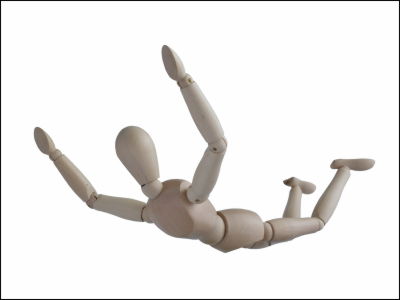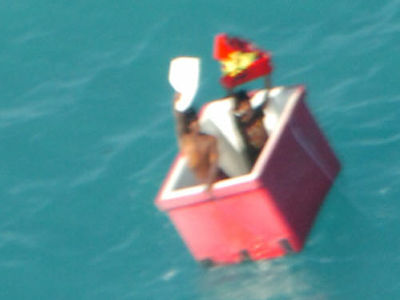A diver talks behind the scenes of successfully rescuing 13 boys from a soccer team who were in distress in a Thai cave

On June 23, 2018, a total of 13 boys and coaches from the Thai soccer team entered the Tam Luang Cave in Chiang Rai Province, northern Thailand, and heavy rain flooded the passage inside the cave and trapped it. I have. The 13 were confirmed alive nine days after the distress,
Thai Cave Rescue: 'One Day Longer and Those 13 Boys Would Be Dead' | ZEIT ONLINE
https://www.zeit.de/wissen/2021-07/thai-cave-rescue-thailand-tham-luang-2018-diver-mikko-paasi
At the time of the boys' distress, Persi, who runs a diving school in Thailand, was in Malta , the Mediterranean with his wife. A few days after the distress, experienced divers such as Persi's friends John Bolansan and Richard Stanton, as well as Thai, American, and Australian military personnel gathered there. He thought that a series of search and rescue missions would be carried out by those specialists.
However, one day, the diving community, including the local rescue team, told us that there was a shortage of computer-controlled side-mounted rebreathers. A normal diving breathing device inhales from a tank of compressed air carried on the back, and exhales as it is released into water. On the other hand, the rebreather allows you to dive for a longer period of time because the gas component is readjusted and reused as breathing gas without throwing away the exhaled breath. In addition, the side-mounted rebreather has compressed air tanks on the left and right sides of the body instead of the back, and the tanks can be switched during diving, so you can dive for a longer time.
Mr. Persi was thinking of celebrating his wedding anniversary with his wife, but decided to hurry to Thailand to deliver his own rebreather to the site. At the time of leaving Malta, the whereabouts and safety of the boys were unknown, and many believed that their survival would be difficult. However, shortly before Mr. Persi arrived at the scene, the boys were found in a cave called 'Chamber 9' and all were found to be alive. The footage of the boys who survived in the cave ran around the world.
The video of the discovery of 13 missing boys in a Thai cave is being released on Facebook and will be played more than 10 million times --GIGAZINE

According to Mr. Persi, the Thai authorities planned to reduce the search in one day because it was difficult to secure the safety of the site due to the continuous rain during the search work. In fact, on July 6, after the boys were discovered, former Navy SEAL diver Saman Gunnan died while carrying supplies and suffered an infectious disease during rescue operations. The diver belonging to the Royal Thai Navy alsodied more than a year after the accident, and the situation was extremely dangerous. Therefore, he points out that if the boys were discovered one day later, there might not have been any subsequent rescue work.
After the boys were discovered, people began to think 'how to rescue the boys?' Instead of 'where are the boys?', But this was another challenge. First of all, 'Chamber 9' where the boys were was a space 2.5km behind the rescue team's front base, and the road was submerged for 1.5km. In addition, the water accumulated in the cave is muddy water that has flowed from the mountain, and the visibility is close to zero, and the diver was forced to dive in a state where he could not accurately grasp the terrain around him.
The U.S. military considers skilled divers like Persi and others to be more suitable for work than those who have no experience of diving in a flooded cave, and asks for the arrangement of cables laid in the cave and the supply of supplies. Did. Persi and his colleagues had not been trained to dive in a zero-visibility cave, but eventually decided to do this and said they dived into the cave with their peers.
However, it is difficult for even a skilled diver to dive in a cave, and one of the friends broke the rebreather about 30m from the starting point, and diving in a situation where communication between friends is not possible. It was harsh. Therefore, at the beginning, it seems that the option of 'children going through the water with divers' was not considered realistic in the strategy to save children.
After that, methods such as 'find another entrance to the cave', 'digging the bedrock to make a hole in the cave', and ' using a submarine developed by SpaceX, a space development company led by Elon Musk ' were proposed. However, it was judged that it would be difficult to realize any of them. There was also the idea of 'delivering food and oxygen to the boys until the end of the rainy season,' but in the end, the British diving team advocated 'carrying the boys underwater after losing consciousness with anesthesia.' The choices have become influential.

by
One of the major obstacles to rescuing boys who had no diving experience was the concern that they might panic underwater. In fact, the divers of the search team had discovered a total of four local telephone company employees who had been left behind in a space called 'Chamber 3' before they discovered the boys. These four people are also involved in the search team, and while they were working to connect the chambers in the cave with cables, they were left behind in chamber 3 due to the flooded water. In the turmoil that the search had just begun, no one was counting who entered the cave and who came out, and four were forgotten for 24 hours.
In order to get these staff back to Chamber 2, it was necessary to move about 15m through the submerged passage. Therefore, the diver decided to have the staff wear a regulator and mask with compressed air to swim in the flooded passage. However, 3 out of 4 people panicked in the water with no visibility and took off the mask and regulator a few seconds after the start of the dive.
From this incident, the rescue team determined that it was unlikely that the boys would swim through a 1.5km submerged passage without panicking. If the person to be rescued panics, not only the person but also the diver who is involved in the rescue work will be at risk, so the issue was 'how to suppress the panic of the boys?' Therefore, Australian anesthesiologist and skilled diver Richard Harris, who was in the field, adopted a method to calm the boys using the anxiolytic drug Xanax (alprazolam) and the anesthetic drug ketamine. It was.

The boys, who were briefed by Harris and others, agreed to sedation and were taken unconscious into the cave. The boys were wearing wetsuits, respiratory regulators, and masks, and their hands were tied to their backs in case they woke up on the way.
Rescue is divided into a total of 3 days, and in addition to the diver who actually carries the boy, multiple divers wait in the chamber in the cave to assist in diving and add sedatives as needed. We provided support such as sedation. Mr. Persi also participated as an assistant diver at first, but when Mr. Gunan passed through the difficult point from Chamber 4 to Chamber 3, he was entrusted with the transportation of the boy because he had a lot of experience through this. ..
'It was a really dangerous moment for me. Suddenly I was responsible for someone's life,' recalls Persi, who suddenly took care of the boy's life. In the first dive, Mr. Persi was frightened because he could not pass the child 50m before reaching Chamber 3. However, thanks to the training, he stopped, breathed slowly and calmed down, and as a result, he said that he was able to choose to 'turn back to chamber 4, although it is 50 meters to chamber 3.' Eventually, Persi was able to return to Chamber 4 with the help of another diver and send the boy to Chamber 3.
In response to ZEIT ONLINE's question, 'Can the world learn from what happened in the cave?', Mr. Persi said, 'Even if you look desperate, you should still try. Think later. Many people think that everything went well, but many things didn't work. I made a mistake, 'he said, and everyone was groping. He said that he was able to rescue the boys by doing his best in.
In addition, in this distress accident, the coach man who was leading the boys was sometimes criticized, but Mr. Persi thinks that all were safe because the coach man was calm at the time of the distress. I am. 'As of June, entering the cave was not prohibited. Children in Western countries hang out in shopping malls for socializing, but there is no such place in Thailand. Forest And nature is their playground. Young people need to be able to explore and gain experience in the world, 'he said, arguing that children do not want to be banned from exploring nature and caves.
Related Posts:
in Note, Posted by log1h_ik






